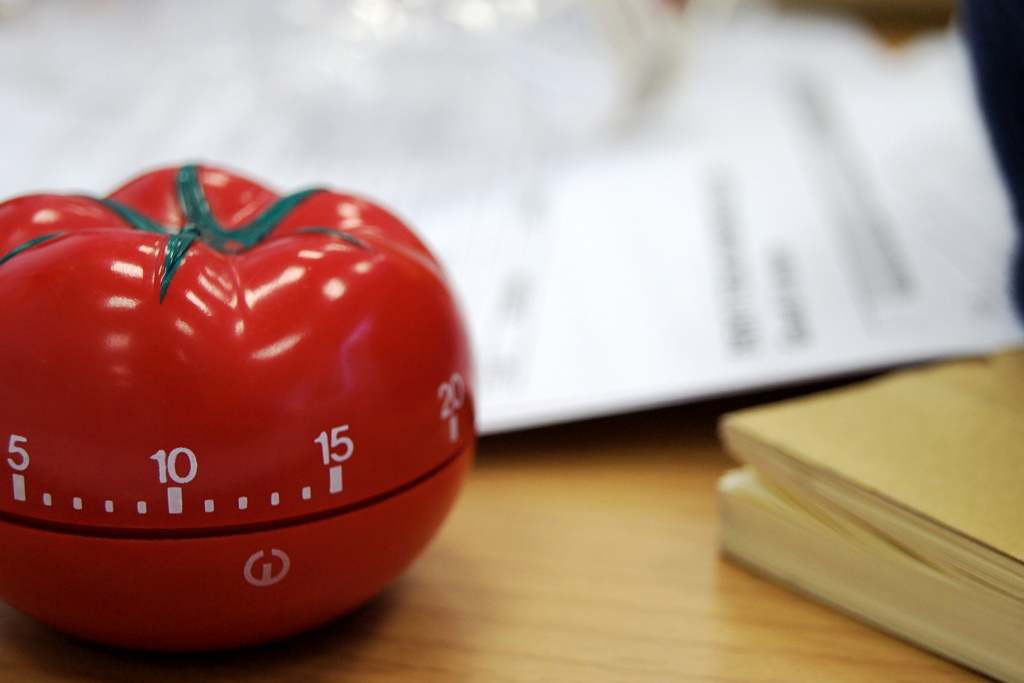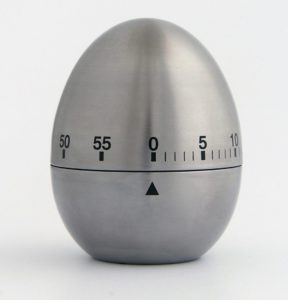Next in our Productivity/How To Be More Organised series is how to actually DO the things you’ve planned and written down. It’s all well and good to plan and to schedule but it’s another thing altogether to sit down and do them. And if you’re a procrastinator or just unsure where to begin, these tips will be of a huge help to you!

What you need to do is decide which tasks you need to do (which you should already have done, if you followed our bullet journal blog or our Getting Things Done blog!), set your Pomodoro timer and work until the timer runs out. Once you’ve finished your task, check it off your list and take a break!
The length of your breaks depend on how many things you’ve checked off the list.
If you have less than four tasks checked, your break should be 5 minutes in length. After a set of four, take a longer break of 15 – 30 minutes.
Then, you start back a new set, and start again from 0 tasks achieved.
Continue until you’ve completed everything you need to do!
It’s very important to take the breaks when they’re scheduled. Not taking breaks could learn to burnout and mental fatigue, and make you less likely to accomplish anything!
If you’re working at a desk all day, sitting down for long periods of time is proven to be bad for your health. It’s recommended that you take a break from your desk every 45 minutes to an hour. So, if you want to use your short break to get a cup of tea, move around a little, or some fresh air between pomodoro, you should!
It’s important to the technique to get up and to move away mentally and physically from the tasks to truly get the most out of your break.
You do have to spend a few minutes beforehand planning what tasks you want to achieve/focus on for those 25 minutes, as well as focusing entirely for the entirety of that time. Planning, tracking, recording, processing and visualising are hugely important to this technique.
Planning is important, because you might want to achieve one large task that completing in 25 minutes is just impossible. So you have to break it down into smaller parts that you can complete in the allotted time.
It’s important to check them off as you complete both the task and the pomodoro, to get that sense of accomplishment and knowing you’re progressing in your tasks.

One of the fundamentals of the technique is using an actual timer. The ticking of it is meant to make you feel aware of the time passing by, and encouraging you to focus more on the task at hand than daydreaming (like I am wont to do… whoops). And the act of resetting it for each new task is meant to signal the beginning of your focus at the new task.
However, if you don’t have one handy, using your phone or this handy timer, can work just as well, and there are plenty of timed apps you can get, such as Tomighty, and it works for both Windows and Mac.
If your task takes less than the allotted time, use your spare time to review what you’ve done or to prepare for the next task. Use your pomodoro wisely!
If you’re interrupted during your pomodoro (by work, an impromptu meeting, family, anything really), it’s better to stop it and start over when you’re ready than it is to pause and come back. Interrupting your focus can break your concentration, and starting a task in the middle will be more harmful to your focus than anything. So, cross it off and start over again.
If something does distract you, like a brief phone call, or even just a thought that pops into your head about what you need for dinner, write it down and deal with in a later pomodoro, or in one of your breaks. Things like these are natural and to be expected, but you have to try and not let yourself be distracted.

Once you get the hang of using the Pomodoro Technique, you’ll be using it to measure just about every task you do! You’ll know how many Pomodoro’s it will take to accomplish a certain task, and it will make you use your time much more effectively.
This includes your studies with StudyOnline.ie. As our lectures are broken down into topics, you can focus on a topic. Other providers offer recorded classroom lectures which are hours long which makes it really difficult to focus. We’re big believers in breaking things down into small, manageable pieces rather than large, intimidating chunks.
It’s important to remember that these are guidelines, not rules that are set in stone. If you find doing 5 or 6 tasks before taking your long break suits you and your work style better, then do that! If you focus better for an hour, work for that length of time before taking longer breaks! Change it up to suit you, and what you need. But having that schedule and guide to follow is the important part.

